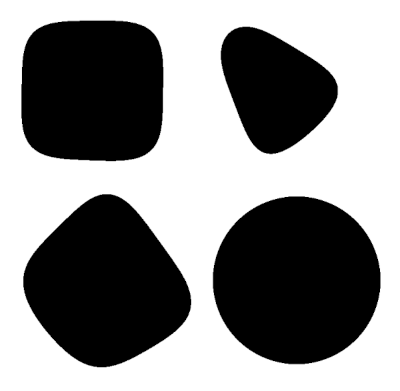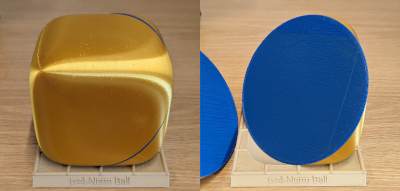Random slices of a sphube
Ben Grimmer posted something yesterday on Twitter:
A nice mathematical puzzle
If you take a 4-norm ball and cut it carefully, you will find a two-norm ball. 3D printed visual evidence below.
The puzzle: Why does this happen and how much more generally does it happen?(This question was first posed to me by Pablo Parrilo)
This is a surprising result, and it touches on two things I've written about before.
Several years ago I wrote about the surprising result that if you slice open a Menger sponge a certain way then you can see six-pointed stars. I was just as surprised to see the result above. I also wrote several posts about squircles," and the 4-norm ball is a 3D version of the squircle, sometimes called a sphube."
I modified the code I'd written for the Menger sponge post to create random slides of the 4-norm ball. Here are some of the results.

One of these happens to be a circle, or at least close enough that it looks like a circle.
My code generated a random point and a random normal vector to determine a plane through that point. That's how I produced the square-ish and triangle-ish plots.
For the last image, I set the normal vector to (1, 1, 1) because the 3D printed image above suggested that would be the right direction. I generated random points inside the cube, and one time the random point was approximately (0.2, 0, -0.2) and noticed the plot was approximately circular. It seems that when z = -x and the normal vector is (1, 1, 1) you get a circular cross section. By symmetry you can make many more examples from this example.
I have not proved anything yet; just played with plots.
The post Random slices of a sphube first appeared on John D. Cook.
